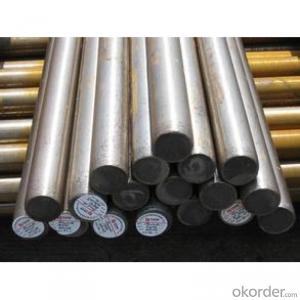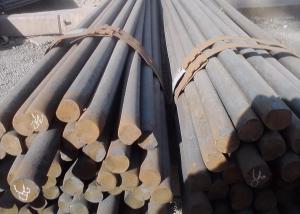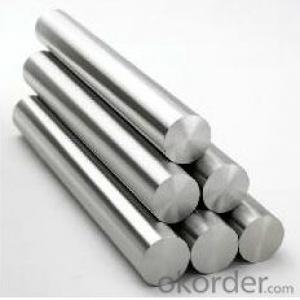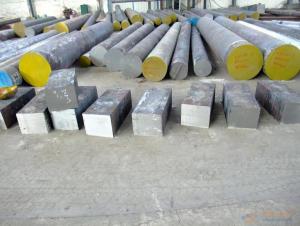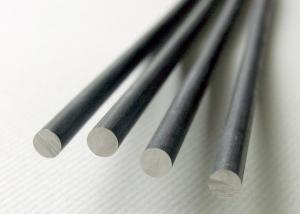Tool Steel Bar 40Cr Alloy Steel Round Bar
- Loading Port:
- China main port
- Payment Terms:
- TT OR LC
- Min Order Qty:
- 30 m.t.
- Supply Capability:
- 10000 m.t./month
OKorder Service Pledge
OKorder Financial Service
You Might Also Like
Item specifice
Tool Steel Bar 40Cr Alloy Steel Round Bar
Product information:
OD:10mm-1000mm
Length:As customer request
Grade:ASTM 1020/ ASTM 1035/ ASTM 1045/ ASTM 1050/ ASTM 1053/ ASTM 1566/ ASTM 5120/ ASTM 5140/ ASTM 4135/ ASTM 4142/ ASTM 1340/ ASTM 1541/ ASTM 1547/ ASTM 1022/ ASTM 1026/ ASTM 52100/ ASTM 4130 ……
DIN EN 1.0402/ DIN EN 1.0411/ DIN EN 1.0501/ DIN EN 1.0503/ DIN EN 1.0540/ DIN EN 1.7016/ DIN EN 1.7035/ DIN EN 1.7220/ DIN EN 1.7225/ DIN EN 1.5538/ DIN EN 1.0415/ DIN EN 1.7218/ DIN EN 100Cr6/ DIN EN 100CrMnSi6-4/ DIN EN 25CrMo4……And so on
Application:Applied to the equipment manufacturing industry, automobile, machinery industry and so on
Packaging:waterproof paper, steel strip packed. Or as customers requirement.
| Material: | 40Cr / 41Cr4 alloy steel specifications |
| Diameter: | 10mm-700mm |
| Length: | 3000mm-12000mm Straightness: 3mm/M max |
| Process: | EAF + LF + VD + Forged + Heat Treatment (optional) |
| Delivery condition: | Hot forged +Rough machined (black surface after Q/T)+ Turned (optional) |
| Delivery Time: | 30-45 days |
| MOQ: | 1 tons |
| Heat treatment: | Normalized / Annealed / Quenched / tempered |
| Technical Data: | According to the customer's requirement of Chemical Composition, Physical Properties and Mechanical Testing |
| Test: | Ultrasonic test according to SEP 1921-84 G3 C/c |
| Marking: | Grade, heat NO. length will be stamped one each bar with required color |
| Payment: | 30% advance by T\T, the balance against B/L |
| Application: | Statically and dynamically stressed components for vehicles, engines and machines. For parts of larger cross-sections, crankshafts, gears. |
Other product show:

Our workshop show:
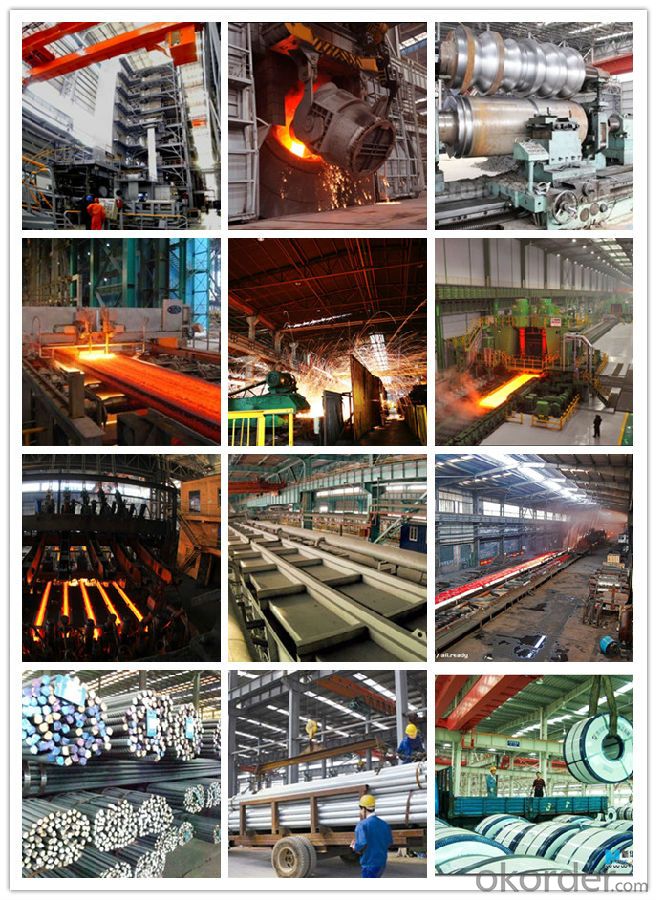
Our service:
-High manufacturing accuracy
-High strength
-Small inertia resistance
-Strong heat dissipation ability
-Good visual effect
-Reasonable price
Chose happens because of quality, then price, We can give you both.Additionally, we can also offer professional products inquiry, products knowledge train(for agents), smooth goods delivery, exellent customer solution proposals.Our service formula: good quality+good price+good service=customer's trust
SGS test is available, customer inspection before shipping is welcome, third party inspection is no problem.
If you need the sample, please feel free to let me know. Any question, we will contact you ASAP!
- Q:Can special steel be used in the production of fasteners for high-stress applications?
- Yes, special steel can be used in the production of fasteners for high-stress applications. Special steels, such as alloy steels or stainless steels, possess enhanced mechanical properties, corrosion resistance, and high tensile strength, making them suitable for demanding and high-stress environments. These types of steel are often utilized in industries such as aerospace, automotive, and construction, where fasteners must withstand heavy loads and extreme conditions.
- Q:How does special steel perform in cryogenic ductility?
- Special steel generally performs well in cryogenic ductility. Cryogenic ductility refers to the ability of a material to maintain its strength and flexibility at extremely low temperatures. Special steels are often specifically engineered to withstand harsh conditions, including cryogenic temperatures, making them suitable for use in applications such as liquefied natural gas (LNG) storage tanks, aerospace components, and superconductors. One of the main reasons special steel excels in cryogenic ductility is its composition. Special steels are typically alloyed with elements such as nickel, chromium, and molybdenum, which enhance their mechanical properties and resistance to low temperatures. These alloying elements provide special steel with increased strength, toughness, and resistance to brittle fracture, even in extremely cold environments. Furthermore, special steels undergo rigorous testing and quality control measures to ensure their performance in cryogenic conditions. This includes testing for parameters such as impact toughness, fracture toughness, and notch toughness, which are crucial for evaluating a material's ability to resist brittle failure at low temperatures. In addition to its composition and testing, the manufacturing processes used for special steel also contribute to its excellent cryogenic ductility. Special steels are often produced using methods like vacuum induction melting and controlled cooling, which help eliminate impurities and improve the material's microstructure. This refined microstructure enhances the steel's ductility, allowing it to maintain its mechanical properties even at cryogenic temperatures. Overall, special steel demonstrates exceptional performance in cryogenic ductility due to its carefully designed composition, stringent testing, and advanced manufacturing processes. These factors make it a reliable and preferred choice for various industries that require materials to withstand extreme cold conditions while maintaining their strength and flexibility.
- Q:How does special steel perform in low-temperature applications?
- Special steel performs well in low-temperature applications due to its unique properties such as high strength, toughness, and resistance to brittleness. It retains its mechanical properties even at extremely cold temperatures, making it ideal for industries like aerospace, automotive, and energy where materials need to withstand challenging environments.
- Q:How does special steel contribute to reducing product lead times?
- Special steel contributes to reducing product lead times by offering unique properties such as high strength, durability, and corrosion resistance. These properties enable manufacturers to produce components and parts with greater efficiency and accuracy. By using special steel, production processes can be streamlined, leading to faster manufacturing cycles and reduced lead times. Additionally, the superior performance of special steel allows for enhanced tool life and reduced maintenance, resulting in increased productivity and shorter production timelines.
- Q:What are the specific requirements for special steel used in the nuclear industry?
- Special steel used in the nuclear industry must meet specific requirements to ensure safety, durability, and reliability. These requirements include: 1. Radiation Resistance: Special steel used in the nuclear industry must possess high radiation resistance to withstand the intense radiation levels present in nuclear reactors. This means that the steel should have low neutron absorption and minimal degradation under irradiation. 2. High Strength and Toughness: Nuclear reactors operate under extreme conditions, including high temperatures and pressure. Special steel used in the nuclear industry must have excellent strength and toughness to withstand these conditions and prevent structural failure. 3. Corrosion Resistance: The steel used in nuclear applications must be highly resistant to corrosion, as exposure to corrosive environments can compromise the integrity of the reactor components. This involves the steel having low susceptibility to stress corrosion cracking, intergranular corrosion, and pitting corrosion. 4. Low Impurity Content: Special steel used in the nuclear industry must have a low impurity content to minimize the potential for radioactive contamination. Any impurities present in the steel can become activated and release radioactive particles, posing a significant safety hazard. 5. Thermal Stability: The steel must have excellent thermal stability to maintain its mechanical properties even under high-temperature conditions. This ensures that the steel remains reliable and performs as expected during prolonged exposure to elevated temperatures. 6. Non-Magnetic Properties: Some components in nuclear reactors require non-magnetic materials to prevent interference with sensitive instruments and equipment. Special steel used in these applications must possess non-magnetic properties to meet this requirement. 7. Regulatory Compliance: Special steel used in the nuclear industry must meet specific regulatory standards and certifications to ensure its suitability for use in nuclear facilities. These standards may vary depending on the country or region, but they typically encompass rigorous quality control, testing, and inspection procedures. Meeting these specific requirements for special steel used in the nuclear industry is crucial for maintaining the safety and integrity of nuclear reactors. Compliance with these standards ensures that the steel can withstand the harsh conditions and the potential hazards associated with nuclear power generation.
- Q:What are the different types of precipitation-hardening steel?
- There are several types of precipitation-hardening steel, including 17-4 PH, 15-5 PH, 13-8 PH, and 17-7 PH. These steels are known for their high strength and corrosion resistance, making them suitable for various applications in industries such as aerospace, automotive, and medical.
- Q:How does special steel perform in impact loading conditions?
- Known for its exceptional performance in impact loading conditions, special steel possesses remarkable strength, toughness, and resistance to deformation, thanks to its unique composition and manufacturing process. By effectively absorbing and dissipating energy, special steel minimizes the risk of catastrophic failure or damage when subjected to impact loading. The high strength of special steel enables it to withstand high impact forces without experiencing significant deformation or fracture, making it particularly suitable for applications where impact loading is prevalent, such as in the construction of heavy machinery, automotive components, and structural elements. In addition to its strength, special steel's toughness plays a crucial role in its performance during impact loading conditions. With excellent fracture toughness, special steel can resist crack propagation and absorb impact energy without fracturing, ensuring that it can withstand sudden and severe impacts without compromising its structural integrity. Furthermore, special steel is often subjected to treatments that enhance its resistance to impact loading conditions. Processes like heat treatment, forging, and quenching and tempering can increase the material's hardness and strength, further improving its ability to withstand impact forces. To summarize, special steel excels in impact loading conditions due to its high strength, toughness, and resistance to deformation. Its efficient energy absorption and dissipation, coupled with its resistance to fracture, make it an ideal choice for applications where impact loading is a concern.
- Q:How does special steel contribute to sustainability efforts?
- Special steel is a key player in sustainability initiatives for various reasons. To begin with, its durability and long lifespan make it highly sought after. It boasts exceptional resistance to corrosion, wear, and tear, enabling it to endure harsh conditions and heavy use. By prolonging the lifespan of products made with special steel, the need for frequent replacements is minimized. Consequently, this conserves natural resources and diminishes environmental impact by reducing resource consumption and waste generation. Furthermore, special steel is renowned for its recyclability. It can be melted down and reprocessed multiple times without compromising its properties or quality. This quality makes it a valuable material within the circular economy, where resources are reused and recycled to reduce reliance on virgin materials. The recycling process for special steel requires less energy compared to producing steel from raw materials, leading to lower greenhouse gas emissions and energy consumption. Moreover, special steel finds extensive application in energy-efficient endeavors. For instance, it is heavily employed in the manufacturing of wind turbines, which produce renewable energy. By providing a material capable of withstanding the demanding conditions of wind turbines, special steel contributes to the expansion of clean energy sources. This, in turn, reduces dependence on fossil fuels, curbs carbon emissions, and aids in mitigating climate change. Lastly, special steel plays a vital role in the transportation industry. It is utilized in the production of lightweight, fuel-efficient vehicles like electric cars. Through reducing vehicle weight, special steel improves fuel efficiency and diminishes greenhouse gas emissions. Additionally, special steel is instrumental in constructing infrastructure for electric vehicle charging stations, facilitating the transition to cleaner transportation systems. In conclusion, special steel's contributions to sustainability are extensive. Its properties and applications promote durability, recyclability, energy efficiency, and clean energy generation. By conserving resources, reducing waste, and combating climate change, special steel emerges as a crucial material in shaping a more sustainable future.
- Q:What are the different methods of strengthening special steel?
- Special steel can be strengthened in various ways, each with its own benefits and uses. Heat treatment is a common method, involving heating the steel to a specific temperature and then cooling it rapidly or slowly, depending on the desired result. This can involve processes such as quenching, tempering, and annealing, which change the steel's microstructure to enhance its mechanical properties. Another method is alloying, where different elements are added to the steel to improve its strength. For instance, adding elements like chromium, nickel, or molybdenum can enhance the steel's resistance to corrosion, while vanadium or tungsten can increase its hardness and wear resistance. Cold working is another technique used to strengthen special steel, involving deforming the steel at room temperature through rolling, forging, or drawing. This aligns the steel's crystalline structure, boosting its strength and hardness. Moreover, surface treatments can be employed to enhance the strength of special steel. Techniques like carburizing, nitriding, or plating can introduce a hardened layer or coating on the steel's surface, improving its wear resistance and durability. Each method has its own advantages and can be customized to meet specific requirements and applications. By combining different strengthening techniques, special steel can be tailored to fulfill a wide range of industrial needs, making it a reliable and versatile material.
- Q:What are the different methods for case hardening special steel?
- There are several different methods for case hardening special steel, each with its own advantages and applications. 1. Carburizing: This method involves heating the steel in a carbon-rich environment at high temperatures. Carbon atoms diffuse into the surface of the steel, forming a hard and wear-resistant outer layer. Carburizing can be done through various techniques such as gas carburizing, pack carburizing, or liquid carburizing. 2. Nitriding: Nitriding is a process where the steel is heated in a nitrogen-rich environment. Nitrogen atoms diffuse into the surface of the steel, forming a hard and corrosion-resistant layer. This process is mainly used for steels with high alloy content. 3. Induction hardening: Induction hardening utilizes induction heating to selectively heat the surface of the steel. Once heated, a quenching process rapidly cools the surface, resulting in a hard layer. Induction hardening is ideal for parts that require localized hardening, such as gears or shafts. 4. Flame hardening: Flame hardening involves heating the surface of the steel with a high-temperature flame and then rapidly cooling it. This method is commonly used for large parts or components that cannot be easily treated with other methods. 5. Laser hardening: Laser hardening is a precise and localized method that uses a laser beam to heat and harden specific areas of the steel. This technique is highly controlled and allows for precise control over the hardened layer depth and hardness. Each method has its own advantages and limitations, and the choice of case hardening method depends on factors such as the desired hardness, the size and shape of the part, and the specific requirements of the application.
1. Manufacturer Overview |
|
|---|---|
| Location | |
| Year Established | |
| Annual Output Value | |
| Main Markets | |
| Company Certifications | |
2. Manufacturer Certificates |
|
|---|---|
| a) Certification Name | |
| Range | |
| Reference | |
| Validity Period | |
3. Manufacturer Capability |
|
|---|---|
| a)Trade Capacity | |
| Nearest Port | |
| Export Percentage | |
| No.of Employees in Trade Department | |
| Language Spoken: | |
| b)Factory Information | |
| Factory Size: | |
| No. of Production Lines | |
| Contract Manufacturing | |
| Product Price Range | |
Send your message to us
Tool Steel Bar 40Cr Alloy Steel Round Bar
- Loading Port:
- China main port
- Payment Terms:
- TT OR LC
- Min Order Qty:
- 30 m.t.
- Supply Capability:
- 10000 m.t./month
OKorder Service Pledge
OKorder Financial Service
Similar products
New products
Hot products
Related keywords
